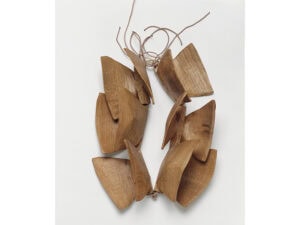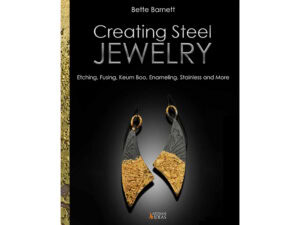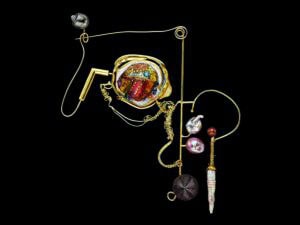This book is a cabinet of wonderful curiosities, particularly for people who are knowledgeable about twentieth and twenty-first century art history. It will also drive you slightly mad, like being invited to a grand buffet and only allowed to pick one or two dishes.
This book is a cabinet of wonderful curiosities, particularly for people who are knowledgeable about twentieth and twenty-first century art history. It will also drive you slightly mad, like being invited to a grand buffet and only allowed to pick one or two dishes.
Don’t expect that the gorgeously photographed pieces featured here are a full history of the century which spawned modernism, cubism, impressionism and the various other ‘isms’ beloved of art history professors. As Yvònne G J M Joris, director of the Stedelijk Museum’s-Hertogenbosch, points out, ‘Artists’ jewelry is rarely seen in public – especially where it is the work of big names from the world of painting or sculpture. That’s partly due to the nature of jewelry itself as something that is intended for actual use. But it also reflects the relative infrequency with which artists have focused on jewelry design – in many cases it represents only a brief excursion from their customary work.’ There are a few notable exceptions here, such as Arman, Meret Oppenheim and Carel Visser, Picasso, Alexander Calder and Man Ray, who are well-represented, but several others only have one piece included, what my mother would have called ‘a lick and a promise.’
Several big names are also missing, possibly because they weren’t represented in the Stedeljik Museum’s collection, the basis for this book. There are none of the magnificent Dali jewels, for example. Maybe the museum didn’t have one, or maybe they are in the hands of collectors or the Dali Museum in St Petersburg, Florida. However, there’s still enough to fascinate in this collection and drive this reviewer into Googling her own mini biographies to fill in the blanks in her art history knowledge. There is also an excellent catalog at the back, giving details of materials, dimensions and dates.
It’s not easy writing about jewelry and even harder writing about art in ways that truly inform and resonate with the reader. Here, six Dutch commentators (artists? educators? writers?) were asked to submit short chapters about specific artists that particularly inspired them. Half of them have somewhat missed their mark; however the chapters on Meret Oppenheim and Carel Visser are well worth reading.
One of the $64,000 questions about this collection is whether the jewelry represents a visible continuation of the artists’ main work, a departure from it, or was made while taking a break from painting, sculpting, print-making, writing or other creative pastimes.
The artist’s fingerprint is most clearly seen in pieces by Picasso, Calder, Max Ernst and Man Ray. A few pieces are lovely miniatures of existing designs, like Keith Haring’s little figures and Cèsar’s thumb brooch. Neckpieces by Arman and Carel Visser and rings by Anish Kapoor are visible expressions of their successful design styles, as is the ring by Robert Indiana, whose Love poster has become a pop-art icon. In other cases it is hard to tell: there was only one simple neckpiece by Louise Bourgeois illustrated in the book, but let’s say there is no spider in evidence.
So read the book. A few of the still-working artists have websites where you can check if their jewelry is available. If any pieces by famous, but dead, artists come up for auction, you’ll know whether to walk, run, clamor – or say, ‘I’d rather have one of their prints.’





